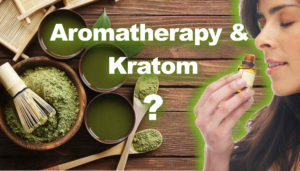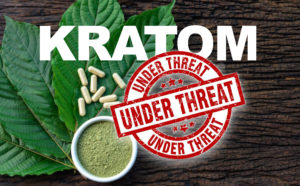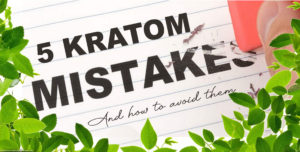Mitragyna speciosa, or kratom for short, is widely used as an herbal analgesic and anxioltic. In recent years, it has taken on a massive reputation among herbalists, natural doctors and curious noot nuts as one of the most potent nootropics for everything from insomnia to a pain killer it aids in so much.
But kratom isn’t the only awesome compound out there for natural pain and stress relief as highlighted by KratomGuides.com. While kratom is largely considered to be the most powerful noot around, there are other great plants and extracts that can do the trick.
Here we will look at some of the more potent natural tonics that are similar to kratom. We endeavor to provide you the most comprehensive list we can and will regularly step in to update this page as more information becomes available. We will also give you an in-depth list of each substance’s benefits and side effects.
MITRAGYNA JAVANICA It has been called the best alternative to kratom and with good reason. Javanica is in the same family of plants as Mitragyna speciosa (kratom) and even looks similar to it. Although it is understood to be less potent than kratom, Javanica contains active alkaloids that can relieve pain in much the same way as kratom.
Rich in 3-isoajmalicine, Mitragyna javanica acts as a mild substitute for those who can’t handle the power of kratom. It is an effective antidepressant and stress reliever that is legal in places that kratom is not.
MITRAGYNA HIRSUTA Commonly referred to as “Kra Thum Knok,” Hirsuta has been in use just as long as kratom. It is rich in 7-hydroxymitragynine and is considered to be one of the top kratom alternatives. With high bioavailability, Mitragyna hirsuta swiftly crosses the blood-brain barrier, serving as a strong opiate-like solution for lowering blood pressure and enhancing brain oxygenation.
Mitragyna hirsuta is a potent antioxidant which has been enjoyed by many, both as a supplement and as a tea.
PICRALIMA NITIDA (AKUAMMA SEEDS) Akuamma seeds have long been used as a natural analgesic in parts of Africa. Today, the Western world is getting hip to the impressive alkaloid content of this herbal substance. With antidepressant and energy enhancing properties, akuamma is a slam dunk.
Akuamma is also used to treat malaria and enhances muscle contractility. However, it does have its drawbacks. As one user on Reddit pointed out, the taste of the seeds are “unbearable,” and doesn’t appear to last as long as the effects of kratom.
That being said, akuamma euphoria is notable and its relaxing and stimulating effects can not be discounted. Several reviewers have praised its ability to treat mild pain without significant side effects.
KAVA Of all the natural remedies listed here, kava is at the top of the list when you talk about kratom. They are virtually synonymous with one another.
Kava has been called “the root of happiness.” A crop of the Western Pacific, kava is technically classified as a pepper, but don’t be deceived. The kava root is much more than that.
Kava is used in tea as a natural stress reliever and is used in both powder and tincture forms as a tonic for anxiety, restlessness, sleep issues, and muscle tension. It is able to promote a night of deep, sound sleep without affecting REM.
For those suffering from withdrawal symptoms, kava acts as a natural anti-convulsant, staving off such side effects of wds. A viable alternative to prescription meds like Valium, kava can alleviate spasms and induce an organic sense of calm.
HOW DO YOU MAKE KAVA TEA? It’s quite simple, folks! Take 2-4 tablespoons of Kava powder. Place kava powder in a blender with 1 cup of water and blend on high for a half hour to 45 minutes. When it’s done blending, run it through a strainer and squeeze liquid out into a bowl or glass. Discard all pulp and it’s ready to drink.
WHAT ELSE SHOULD I KNOW ABOUT KAVA? Some things users should know about kava: It has been shown to cause liver failure in some people. Kava should never be combined with alcohol as the alcohol will intensify kava’s sedative effects. It should also not be combined with psychotropic medications.
Another reason it is important to avoid alcohol when taking kava is that kava can affect your motor skills and overall coordination. Long-term use can lead to jaundice (yellowing of the skin) and, as such, users are advised to only take it on an intermittent basis.
LACTUCA SERRIOLA (WILD OPIUM LETTUCE) Wild opium lettuce has long been implemented as a natural hypnotic (sleeping pill) and all-natural narcotic. In addition to its sedative effects, Lactuca serriola, or “prickly lettuce,” also acts as an antispasmodic and anodyne (pain reliever).
In modern medicine, it is used to treat eye ulcers. Its sister plant Lactuca virosa (also referred to as wild lettuce) is also used as a natural pain reliever. The Roman emperor Augustus supposedly constructed a statue to honor the physician who recommended he use this lettuce to treat a serious ailment.
There is much speculation about what that serious ailment was, but the overwhelming odds are that the ailment in question was syphilis. As for which variety of wild lettuce the emperor used is anybody’s guess.
Wild lettuce is used to relieve pain, induce restful sleep, and manage a woman’s menstrual cycle. Traditionally, wild lettuce was served in tea form to cure scorpion and spider bites. Today, we know that wild lettuce can treat asthma, whooping cough, insomnia, urinary tract problems, joint pain, nymphomania, painful period cramps, priapism (swollen genitals) in men, and circulation problems.
It is a smokable herb that can be taken as a powder, in supplement form, as a tea or rolled into a makeshift cigarette. It is also used in seed oil form for atherosclerosis (hardening of the arteries).
NYMPHAEA CAERULEA (BLUE LOTUS) The dried flowers of the blue lotus plant act as a natural euphoric drug with both sedative and aphrodisiac properties. Also referred to as the Sacred Lily of the Nile, Blue Lotus is often steeped in tea or smoked in order to unlock its many health benefits.
Like kratom, Blue Lotus has gained a reputation for being calming and sedative in nature. It has also been known to improve mood.
HOW DO YOU MAKE BLUE LOTUS TEA? This is an easy process and one that works best for unlocking its psychoactive effects. You simply boil 1 to 2 cups of water, then you add 5 grams of dried blue lotus leaves and/or bulbs and steep for all of 20 minutes. Boom! Your tea is ready to drink.
The effects of blue lotus generally take a half-hour to take effect. Once they do, you’ll be glad you tried this impressive herb.
WHAT ELSE SHOULD I KNOW ABOUT BLUE LOTUS?
Blue Lotus’ benefits are not limited to its psychoactive properties, it is also used to stop bleeding and combat diarrhea. Unfortunately, it also has its share of potential contraindications. Blue Lotus interacts poorly with Nembutal as they intensify each others’ sleepiness effect.
Blue Lotus should also not be taken in conjunction with diabetes medications as blue lotus can drastically lower blood sugar in some people.













